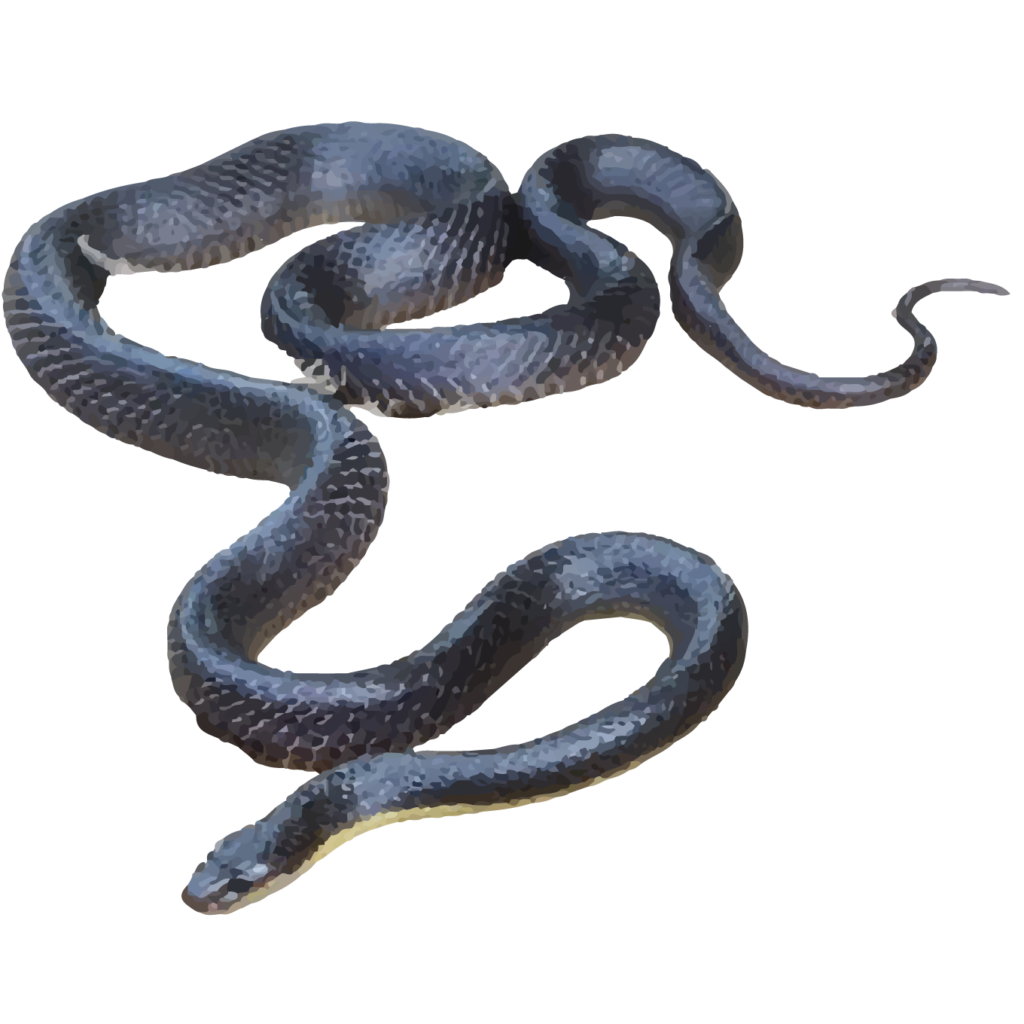Banded Krait (Bungarus fasciatus)

- Habitat: Forest, agricultural lands, termite mounds, rodent holes, villages, open plains of countryside.
- Distribution: North-east India, Andhra Pradesh, Chhattisgarh, Madhya Pradesh, Bihar, Uttar Pradesh, West Bengal.
- Diet: Rodents, frogs, own species and other snakes, eels, fishes and lizards.
- Size: 1.8 to 2.25 metres
The banded krait (Bungarus fasciatus) is another highly venomous snake found in South and Southeast Asia. It is known for its striking black and yellow banded pattern and potent neurotoxic venom. Here are some detailed points about this species:
Physical Characteristics
- Size: Banded kraits can grow up to 2.7 meters (8.9 feet) in length, but they are typically around 1.8 meters (6 feet) long.
- Appearance: They have a distinctive, alternating black and yellow banded pattern along their body. The bands are broad and very conspicuous.
- Color: The bands are typically bright yellow and black, which serves as a warning coloration to potential predators.
Habitat
- Geographical Range: The banded krait is found in South and Southeast Asia, including India, Bangladesh, Myanmar, Thailand, Laos, Cambodia, Vietnam, Malaysia, Indonesia, and southern China.
- Environment: They prefer a variety of habitats including forests, marshes, agricultural fields, and human settlements. They are often found near water bodies and are known to inhabit burrows, termite mounds, and other hiding places.
Cultural Significance
- Symbolism: The banded krait, with its striking appearance, is often recognized in local folklore and is sometimes depicted in regional art and mythology.
- Mythology and Folklore: In some cultures, banded kraits are associated with mysticism and are sometimes considered to have supernatural attributes.
Conservation Status
- Threats: The main threats to banded kraits include habitat loss, road mortality, and killing by humans out of fear.
- Conservation Efforts: Efforts to conserve banded kraits focus on habitat protection and raising public awareness to reduce human-snake conflict. Conservation organizations also work to ensure that kraits are not indiscriminately killed and that their ecological roles are understood and respected.
